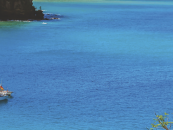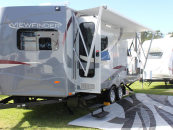Boating as a lifestyle evokes with it thoughts of enjoyable, long, lazy afternoons basking in the sun relaxing, and allowing stresses to fade. Being well prepared for your experience with a carefully selected wardrobe of practical and comfortable clothing and personal accessories will ensure that you are comfortable.
The Gold Coast and the rest of South East Queensland share the same subtropical climate, so it is generally warm and sunny all year round. The winter months do not offer freezing temperatures, so going out on boats around this time is still a very pleasant experience. However, nature remains unpredictable, and it is best to remain wise and well prepared.
Wearing layers is highly recommended to ensure you are shielded from the cold, the wind and the sun. Here is a list of essential outfits and accessories that are appropriate for the mild winter season and will provide sufficient protection for you and your family.
Boat Wear
Shirts: Choose breathable fabric, like lightweight cottons and chambrays, so that you can layer over these. Quick-dry shirts are a must for liveaboards as these can be simply rinsed and line-dried for you to wear again. Long-sleeved shirts are preferred to layer over ordinary clothes. Fabric with UV protection is highly recommend.
Jackets: Soft outer shell jackets that are made from waterproof nylons offer protection from wind and the rain. They often have hoods and often a removable inner fleece lining. These can be layered over long-sleeved shirts and other item,s such as hooded fleece jumpers.
Trousers: Preferable for women, over skirts and dresses, these are best when they are made from a combination of nylon, polyester and cotton. Mixed fibres create a very resilient fabric, and are easy-wear and easy-care. Trousers can have the option of having zip-off legs creating a versatile wardrobe item. And on warmer days, these can be worn as shorts to give more flexibility than having additional items of clothing.
Skirts and dresses: These are generally discouraged when going boating, as you will be climbing, moving around a lot, and exiting and entering cabins and tenders, and personal dignity is preferred. Should the occasion demand some sort of skirt or dress, a tunic over a set of smart trousers will suffice. It would not hurt to pack skirts and dresses, in any case, for land-based activities.
Shoes: When purchasing shoes that are suitable for your boating experience, you should be looking for shoes that are easy to slip on and off, and that have light-coloured non-slip soles that avoid marking the boat decking. Sandals, some sneakers, and leather boat shoes are appropriate, if they are non-slip, provide adequate support, and are easy to slip on and off.
Essential Personal Gear
Hats, sunglasses and protective equipment for your electronics are essential when you are travelling on your boat. Hats and sunglasses protect both your face and eyes from sun and UV rays, even when the sky is overcast. They do have a habit of flying overboard in windy conditions, so it is recommended to have at least a spare set of both, stored in easily accessible locations in the boat.
Waterproof covers for your electronic items, and floating waterproof personal gear bags are recommended to store your keys, wallet, purse and electronic devices. For long blue-water cruising trips to other ports, it is even more important to store items such as visas and passports in secure and waterproof document holders. Many travel stores have these items readily available.
For personal care items, Turkish towels and microfibre towels take up very little space and are easy to rinse and line dry. Spare gear bags are all useful to take on board. Travel-size bottles, zip-out hanging toiletry compartments, and zipped packing cells to keep items organised and clean ensure that everything stays accessible.
Sun and Safety Tips
Observe general sun safety and good health practices while going boating, including applying plenty of sunscreen, regularly applying it, and staying well-hydrated, and protecting oneself against the elements. This should all contribute to a safe and enjoyable boating trip.
It is imperative to ensure that you itemise and check all of your required personal items, clothing and safety equipment prior to embarking on your boating trip. This includes having a safety plan and process for the skipper and passengers to follow, and outline expected behaviours and plans should anything need to be enacted such as putting on life jackets. Passengers should assist the skipper in checking off all included items, including ensuring that they are not only included, but in well-maintained condition.
By Lori Woodward



























